Have you ever wanted to indulge in a delicious chocolate treat with a healthy twist?
Do you find yourself often wishing you could make better choices when it comes to your candy?
If so, organic chocolate truffles are the answer for you!
There are tons of benefits to enjoying organic chocolate truffles, but you might be a little confused as to what makes a truffle organic in the first place. It’s okay to have a few questions when it comes to organic dark chocolate truffles—and this article is here to answer them all for you!
In the following sections, I’ll teach you all about where organic chocolate came from and how they became popular. You’ll also learn what makes a truffle organic, how to compare organic truffles versus standard ones, and the ingredients that are used in the production of these types of truffles. You’ll understand the pros and cons of organic truffles, and you’ll even be provided with a list of places to shop and recipes to try making on your own if you’re looking for a tasty treat right away.
Everything you need to know about organic chocolate truffles is here in this article. So what are you waiting for? It’s time to start learning!
Origin of Organic Truffles
Where did chocolate truffles come from? How did the organic food craze influence the creation of chocolate truffles? Where does the history of these two separate food phenomena intersect?
These are all very important questions!
A Brief Truffle History
In order to understand the origin of organic chocolate truffles, you first need to understand where truffles came from in the first place. It’s said that these delicious concoctions were created when a popular French chef accidentally poured heated whipping cream over chopped baking chocolate and realized that he could form a ganache with this mixture. He named his creation the truffle, after the lumpy black fungus that made parts of France so famous. This is said to have occurred at some point between 1890 and 1920, but there’s no specific date that truffles can be traced back to.
A Brief Organics History
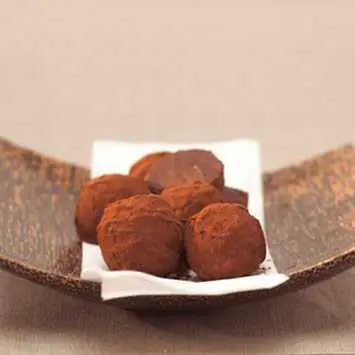
It might surprise you to know that organic farming dates back almost to the same time period! Although the popularity of organic foods didn’t take off for a long time, the concept of organic farming can be traced all the way back to the early 1920s. It wasn’t known as “organic” at the time, but this was the first sign of a more natural approach to farming taking over after the introduction of chemical pesticides and fertilizers some years before. The term “organic” wouldn’t come around until 1940 when it was first used in a book on farming.
Organic Truffles
So now you’re probably asking yourself what all this means, right? You understand where and when truffles originated, and you know that organic farming started around the same time but only grew in popularity since then. Did you also know that the market for organic foods didn’t really take off until the late 1990s and early 2000s? Although these types of products were marketed as early as the 1970s, they didn’t become popular until the health crazes of the turn of the millennium. But of course, truffles remained popular throughout all those decades!
So how did the two cross over?
With people becoming more and more interested in organic eating, it’s easy to see just how organic chocolate truffles came into being. In the late 1990s, consumers were buying food sometimes just because it had the word “organic” on the label. Of course, this meant that a lot of foods were being mislabeled just to increase sales, but that has been regulated since then as well. And since that time, even sweet treats like the chocolate truffle have been included in the world of organic edibles.
These days, it’s easy to find organic ingredients to make your own truffles at home. You don’t have to rely on prepackaged truffles to tell you whether or not they’re organic, and you don’t have to go out of your way to find a confectionary shop that makes organic truffles either. You can put together the perfect recipe while sticking to a healthy, organic diet as much as you like.
What Are Organic Truffles?
Now it’s time to understand what makes a truffle organic. Of course, you can probably recognize a truffle when you see one, but just to recap quickly: chocolate truffles are candies made primarily of chocolate and heavy whipping cream. They may be flavored with extracts such as vanilla or orange, or they may contain other ingredients like chopped nuts, shredded coconut, or mini chocolate chips. These ingredients are usually used to coat the truffle, but they may be mixed into the ganache in some recipes. Chocolate truffles should be smooth and creamy, and American style chocolate truffles may have a snappy, hard outer shell.
Is My Truffle Organic?
So how do you know when a truffle is organic?
As with any food, the term organic means that the ingredients used haven’t been grown, harvested, or packaged with manmade fertilizers, pesticides, genetic modification, hormones, or radiation. They are free from contaminants that might affect your health in any way.
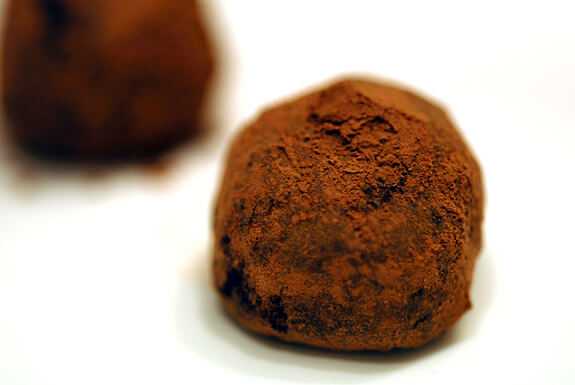
Organic truffles are simply made with organic ingredients. If a truffle states that it is 100% organic, or if you make a truffle using only ingredients that are labeled as 100% organic, this means that everything involved is completely organic with no room for error. On the other hand, if you come across a label that says “organic” without a percentage, this means that it contains at least 95% organic ingredients, but may include some hormones, pesticides, or other unwanted items.
Finally, if the products you use to make your homemade organic truffles say “made with organic ingredients,” this means that only 70% of the ingredients are organic in nature. However, the remaining 30% still cannot include anything made through genetic modification if a product has this label.
How to Tell if a Truffle Is Really Organic
If you’re very concerned with whether or not your truffles are completely organic and you’ll be purchasing from a local confectionary, you can always ask about the ingredients used. Any reputable candy shop will be happy to at least confirm the organic status of their ingredients for you, even if they won’t give you their recipes! If you’ll be making truffles at home, you can choose all-organic ingredients as often as you want to. Of course, if you’re purchasing premade store-bought truffles, all of this labeling will be accurate. You’ll be able to tell if your truffles are truly organic simply by checking the wording on the package.
Organic Truffles vs. Standard Truffles
There are a few differences between organic and standard truffles. When it comes time to either shop or choose your recipe, it’s a good idea to understand what makes each one of these types of truffles different. That way, you’ll have no surprises when you sit down to enjoy your sweet treat!
Organic Truffles
- Organic truffles utilize healthier ingredients overall, and many companies cater to gluten-free and even vegan customers as well. Since most consumers who are interested in purchasing organic foods and ingredients are likely to be concerned with their health, wellness, and personal fitness, they’re also more likely to buy truffles that fit into many different healthy categories. If you see a phrase like “vegan” or “gluten-free” on a truffle you’re interested in buying, ask more about it. Chances are good it’s also organic, and vice-versa.
- These types of truffles are more likely to explain the ingredients that go into each one, rather than leave you guessing. When you purchase a premade box of chocolate truffles that happily proclaim themselves as organic on the packaging, you should have no trouble figuring out exactly what went into this batch of candy by reading the ingredients on the back. Nothing should be hidden and no code words should be used. Everything should be natural and non-chemical.
- Organic truffles are often a little bit lower in calories than standard truffles, although not necessarily. Most of the time, using organic ingredients means foods are a little bit healthier overall. They’re likely to have less fat and lower calories, but this isn’t always the case. Don’t choose an organic truffle just because you’re trying to lose weight. However, remember that it’s much easier to modify an organic truffle recipe to work well for just about any diet than it is to do the same thing with a standard truffle recipe.
- Because the ingredients in organic truffles may not work the same way as they do in standard truffles, they are often sold in squares or in candy molds instead of simply rolled into balls. This is not always the case, however. Sometimes, these ingredients aren’t capable of holding up to the kind of handling a traditional ganache might be able to take. When this happens, confectioner’s will use candy molds or form bars or fudge-like squares from their truffle mixtures instead. Technically, these are still truffles, but they may not look the part. If this concerns you, don’t be afraid to shop around for round organic truffles instead.
- Companies that produce organic truffles are more likely to be concerned with sustainability and healthy choices for yourself and for the environment. If this is very important to you, don’t hesitate to check out the “about” section for any organic truffle company on their websites. They’ll let you know right away if they try to use sustainable ingredients, local ingredients, or anything else that’s good for the environment.
Standard Truffles
- These truffles are usually made from full-fat ingredients and may contain quite a few more calories than organic truffles. While organic truffles aren’t necessarily healthier, they have a much better chance of being good for you than standard truffles do. Generally speaking, a standard truffle is not going to be healthy, low fat, or low calorie unless it specifically says so. With ingredients like butter and heavy whipping cream, it’s hard to be healthy!
- Standard truffles usually fit into one of the main truffle categories: American, Swiss, or French. They don’t generally deviate too much from these subsections of the truffle world. French truffles are made from creamy ganache topped with cocoa powder or confectioner’s sugar, while American and Swiss truffles have harder outer shells and creamy fillings. American truffles may have just about any type of coating, while Swiss truffles are likely to stick to plain chocolate shells. These distinctions are true of almost every standard truffle.
- More often than not, standard truffles are served in ball form. Sometimes, you’ll find them shaped like hearts or maybe even squares, but this is rare. Because ganache fillings are designed to be rolled into balls easily, there’s very little reason for truffles to deviate from this tradition. They are usually topped with either melted chocolate or cocoa powder, or may be finished with sugar, nuts, or even sprinkles. However, for the most part, they all look more or less the same.
- It’s much easier to find standard truffles for sale, especially from candy companies. However, these companies are less likely to be open about their ingredients or sources if they use non-organic products. While ingredients will be listed on the back of any packaging, you might come across code names for unwanted ingredients in some truffles. Don’t be afraid to do a little research and find out just what’s going into your store bought standard truffles.
- Standard truffles purchased from stores may have long chemical name ingredients listed on the back. These ingredient names are a sure sign that you’re putting something non-organic into your body. This is a major cause for concern for anyone who runs the risk of food allergy to chemical additives, so if you see a word you don’t recognize on a truffle package, you might want to stay away!
What Goes into an Organic Truffle?
The ingredients in organic truffles don’t differ too significantly from those found in standard truffles, but the quality of the ingredients definitely does. For example, where you might see standard truffle recipes made with chocolate chips to help cut corners, organic truffle recipes will always be made with high-quality cacao baking chocolate or other good chocolate. Read on to find out more about the types of ingredients you’re likely to see in organic truffles.

- Cacao powder – This is a raw, unsweetened ingredient that takes the place of Dutch-process cocoa powder in many organic truffle recipes. Since cacao is a natural ingredient that comes from a plant and hasn’t been heavily processed, it’s organic. Many types of cacao powder can also be found with a fair trade seal of approval.
- Medjool dates – These dates are often used to give organic truffles their sweetness. Be sure to choose dates that are stamped as organic, so you’ll know you’re not getting any that have been treated with unwanted pesticides or fertilizers.
- Agave syrup – This is an all-natural and organic method of sweetening that may take the place of dates in some recipes. It may be harder to work with than more solid versions of sweetener like sugar, so pay close attention to the amounts listed in recipes to be sure you’re using it correctly.
- Raw nuts – Many organic truffle recipes include nuts. Be sure to purchase raw nuts, and consider getting nuts that are still in the shells if possible. You will need to shell them on your own, but you’ll be much more likely to find organic options if you choose this route.
- Pure extracts – Be sure to select extracts that have an organic seal of approval if you’re trying to make 100% organic chocolate truffles. These may cost quite a lot more, however, so be wary of pricing when picking up extracts. Not every recipe will call for an extract ingredient.
Pros and Cons of Organic Chocolate Truffles
As with anything, there are both pros and cons to enjoying organic chocolate truffles. While some of these can easily apply to any type of organic foods, others are more specific to chocolate truffles. Read through this list to decide for yourself if eating organic candies is really the right choice for you.
Pros
- Organic truffles never include ingredients that have come from animals treated with growth hormones. This is very important if you have a lot of food allergies that can be triggered by the presence of these hormones in ingredients like whipping cream or butter.
- No organic truffle ingredients have been genetically modified in any way. These days, consumers are very concerned about the presence of GMOs in food. When you enjoy an organic truffle, this is one less thing you have to worry about.
- Organic truffles benefit the environment. This type of farming is good for the soil as well as for the plants and animals that live on farms. Pollutants are kept out of the environment when products are farmed organically, and pesticides are less likely to seep into water supplies.
- Organic chocolate truffles are a great way to enjoy a snack break without filling up on unhealthy calories or fats. Most of the fats from these truffles come from healthier sources, and these truffles are much better for your body overall. If you have digestive issues or gluten allergies, you’ll be even better off enjoying these truffles.
Cons
- Organic foods are very expensive. Ingredients and premade truffles both may cost up to 50% more for organic options than for standard ones. Be sure you have plenty of money set aside in your truffle budget before you spend on organic food.
- It can be difficult to find organic chocolate truffles or all the ingredients you need to make them without doing some shopping around. Organic foods can limit the types of ingredients you’re able to find, and if you live in a small town with only one or two markets, you may be out of luck. You can always order online if you’re having trouble finding ingredients locally.
- Organic food might not taste the same as what you’re used to. Most of the time, people believe it tastes better, but you might want to test out the flavors of your ingredients before you go to the trouble to put your truffle recipe together, just in case. You wouldn’t want to spend a lot of money, time, and effort making organic truffles you won’t like in the long run!
- Organic products have a shorter shelf life, and therefore, your organic truffles might not keep as long even if you store them properly. While most truffles keep in the freezer for up to two months or store in the refrigerator for up to two weeks, you should expect your organic truffles to have their shelf life cut in about half. Be careful to store them properly in order to enjoy the best possible outcome of your truffles.
Where to Buy Organic Chocolate Truffles
Now that you’ve been given all the information you need to choose organic chocolate truffles for your next sweet tooth craving, you probably want to know where to buy them, right? Check out these three stores online to pick up some of the best organic chocolate truffles available. Each store offers organic options, so be sure to check out what’s available to find the perfect flavors for you.
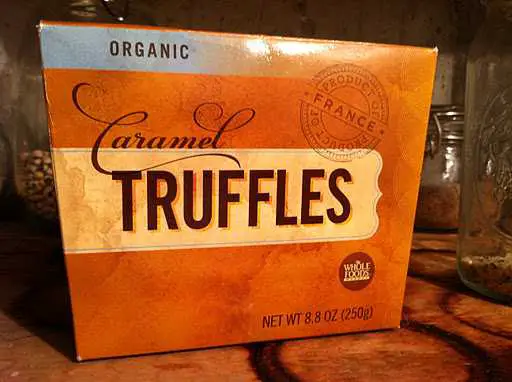
- Nicobella Organics - If you’re looking for a great place to pick up just about any type of organic chocolate candy, check out Nicobella Organics. This company focuses entirely on using organic ingredients to give you an energy-boosting, healthful bite of chocolate no matter what you’re looking for. Best of all, the chocolates sold from this company are sustainable, gluten-free, cruelty-free, and fair trade, so if you’re a very environmentally-minded person, you’ll love ordering from Nicobella!
- Lake Champlain Chocolates - Lake Champlain Chocolates doesn’t only specialize in organic chocolates, but they do have an entire section of their website devoted to this type of candy. Shop around and see what flavors they have available, and you’ll be surprised at the variety you can have when you order from this Vermont-based company. Like many Vermont companies, Lake Champlain Chocolates utilizes fresh, locally-sourced ingredients from area farmers whenever possible.
- Whole Foods - While you might prefer to do your truffle shopping from stores that specialize in candy making, never forget the potential of Whole Foods! Whole Foods stores tend to carry a wide selection of chocolate truffles from different companies from around the United States, and sometimes, from beyond. Several of these offerings are organic and even feature official USDA organic certification to prove it.
You now know a little bit more about where to buy chocolate truffles if you’re looking for organic options you don’t have to make yourself. But what if you want to do the work and enjoy the fun of making candies in the kitchen? Read on to discover a handful of my favorite organic chocolate truffle recipes to help you get started.
1. Heart Healthy Organic Truffles
Be sure to choose all USDA Organic certified ingredients when you put together this heart-healthy truffle recipe packed with superfoods.
Prep Time: 25 minutes
Cook Time: 3 hours
Difficulty: 3
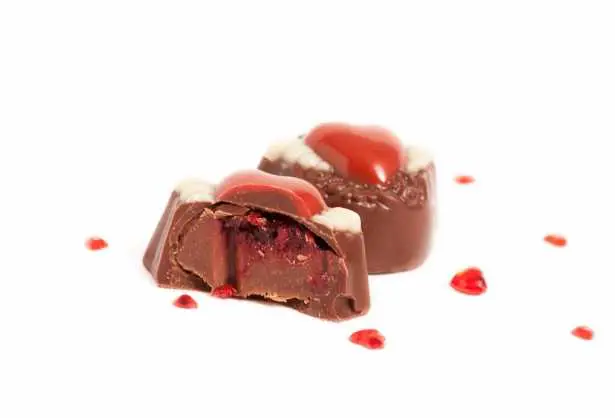
Ingredients
- 3-1/2 tbsp organic virgin coconut oil
- 1 vegan organic dark chocolate bar that is at least 70% high-quality cocoa
- 1-1/2 tsp prepared organic coffee (fair trade if possible)
- 1 tbsp organic raw honey
- ½ tsp pure vanilla extract
- Organic dark cocoa powder, unsweetened, for coating
- 1 pinch sea salt
Procedure
1. Set up a double boiler on the stovetop over low heat.
2. Finely chop vegan chocolate bar and place into the double boiler.
3. Stir slowly and gently until the chocolate has completely melted.
4. Add coconut oil and stir until everything is melted and well combined.
5. Place the bowl of melted chocolate and coconut oil away from the heat and immediately add coffee, honey, vanilla, and sea salt. Stir until thoroughly combined and very smooth.
6. Loosely cover mixture and chill in the refrigerator for 1 hour.
7. Roll mixture into 1-inch balls by hand and place on a lined baking sheet.
8. Roll balls into dark organic cocoa powder to coat thoroughly.
9. Return to the refrigerator to chill for 2 hours more.
10. Serve at room temperature.
2. Organic Vegan Truffles
If you’re looking for a truffle recipe that comfortably crosses the line between organic and vegan without losing any flavor, look no further than this great option.
Prep Time: 20 minutes
Cook Time: 2 hours
Difficulty: 3
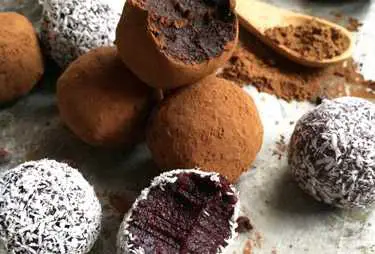
Ingredients
- 1 cup raw walnuts
- 1 cup raw pecans
- ¼ tsp sea salt
- 1 tbsp unsweetened organic dark cocoa powder
- ½ tsp ground cinnamon
- 1-1/4 cup organic vegan dark chocolate
- 10 pitted Medjool dates
- 1 tsp coconut oil
- ¼ cup cacao nibs
Procedure
1. Soak dates for 10 minutes in warm water. Drain water.
2. In a food processor or blender, combine walnuts and pecans and pulse on high until fine and mealy like flour. Pour into a separate bowl and set aside.
3. In the same food processor or blender, add pitted dates and pulse on high until a ball is formed.
4. Add half of the nut meal back into the blender along with all of the cocoa powder. Pulse until loose dough forms, adding a little bit of the nut meal at a time until the mixture feels like a dough. You may not need all of the nut meal.
5. Roll dough into 1-inch balls and place on a lined baking sheet.
6. Chill in the freezer, uncovered, for 2 hours.
7. Roughly chop dark vegan chocolate and place in a double boiler over low heat on the stovetop. Stir gently and slowly until melted and smooth.
8. Dip frozen truffles one at a time into melted chocolate using a fork. Tap on the edge of the bowl to remove extra chocolate and return truffles to the lined baking sheet.
9. Let stand a few minutes at room temperature to set up.
10. Serve.
3. Extra Sweet Organic Truffles
This is a sweet and delicious recipe that’s sure to please every member of your family when you put it together with all organic ingredients!
Prep Time: 30 minutes
Cook Time: 1 hours
Difficulty: 2

Ingredients
- ½ cup organic agave syrup
- 1-1/2 cup raw organic cocoa powder
- ¼ tsp ground vanilla
- ½ cup raw soaked and drained hazelnuts
- ½ cup raw soaked and drained hazelnuts
- ¼ cup raw soaked and drained cashews
- Pinch of Himalayan salt
- 1 tsp organic hazelnut oil
- 1/3 cup finely chopped cocoa butter
- 1/3 cup organic coconut oil
- Dried organic coconut shreds for topping
Procedure
1. Set up a double boiler over low heat in the stovetop.
2. Place cocoa butter in the double boiler and melt, stirring gently, for 2 minutes until almost smooth.
3. Remove from heat before completely melted.
4. Add coconut oil to melted cocoa butter and let it stand until it melts.
5. In a large food processor or blender, combine agave syrup, ground vanilla, Himalayan salt, hazelnuts, cashews, and hazelnut oil. Pulse on high until creamy and very smooth.
6. Scrape this mixture into a bowl and chill, covered loosely, in the refrigerator for 45 minutes.
7. Roll into 1-inch balls by hand and place on a lined baking sheet.
8. Chill for 10 minutes more in the refrigerator.
9. Roll balls into organic coconuts shreds.
10. Serve at room temperature.
Conclusion
As you can see, the world of organic chocolate truffles is vast and varied! There are tons of different places for you to find these types of truffles if you’re looking to shop in stores or online, and you can also choose from several different recipes if you prefer to try to make them at home.
By now, you should understand a lot about what goes into an organic chocolate truffle, and what makes it so different from a standard chocolate truffle, too, You’ll be able to identify which truffles and recipes you find are really organic and which ones might be close, but not quite there. Best of all, you’ll be ready to step into the kitchen or head online and either put together a batch of your favorite truffles or order a delicious flavor directly from a company that cares as much about organics as you do.
No matter what you’re looking for, you can find it when you focus on organic chocolate truffles!
